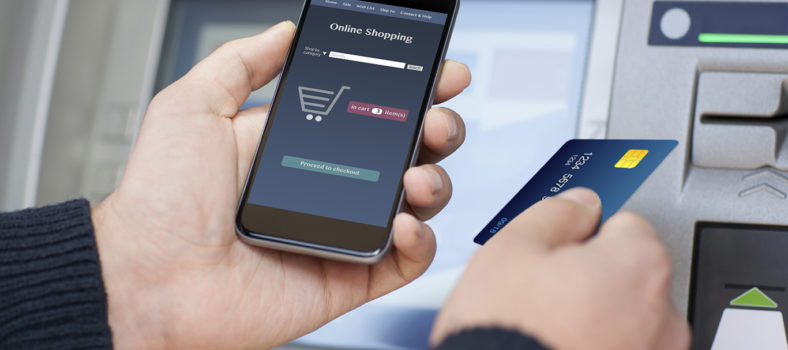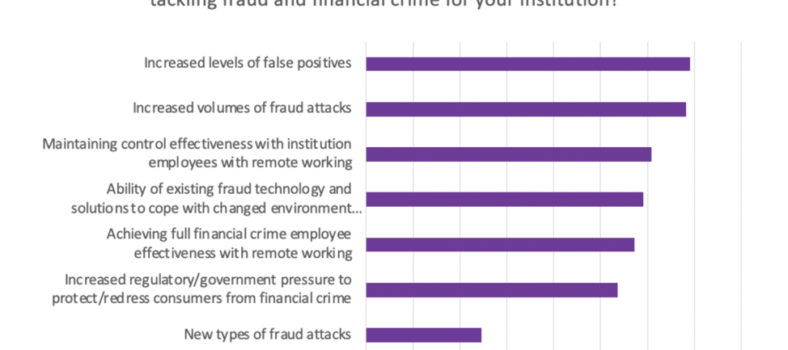 By Fabio Carvalho
By Fabio Carvalho
COVID-19 has changed the way consumers look at commerce and payment options. It has provided the impetus to overcome consumer inertia, and has created an unprecedented global appetite for changes to how we pay, with businesses adapting to make payment transactions fast and safe for both customers and associates.
According to Visa’s Back to Business study, 78% of global consumers have adjusted the way they pay for items in the wake of intensified safety concerns.
In the immediate future it’s predicted that:
• By 2023, five countries will have launched digitization initiatives aimed at eliminating cash from circulation.
• By 2024, global cash in circulation will be reduced for the first time after decades of continuous increases.
• By 2024, mobile proximity payment users globally will double to nearly 2 billion, compared to less than 1 billion in 2019.
In the decade to 2030, the pace of transformation in the payments industry is set to accelerate. Non-traditional players continue to enter the market, from the global technology giants to car manufacturers and consumer goods companies, bringing new industries into payments.
Here are 10 predictions for what will happen to payment by 2030.
1. Nation-states will launch their own digital currencies to retain control of economic policy
The growth of digital currencies has disturbing implications for sovereign states and central banks, which are at risk of losing sight of the financial flows passing through their economies. As such, expect more countries to follow the lead of China in launching a state-controlled digital currency; for example, last October The Bahamas launched the Sand Dollar. Each country doing so will assert its digital currency’s supremacy over non sovereign alternatives but will also compete with the currencies of other nations.
2. Regulators will police payments processes rather than providers
With so many new players emerging in payments, including many from beyond banking and even financial services, today’s regulatory systems, constructed around scrutinizing the activities of categories of institutions is increasingly unfit for purpose. Instead, a new multinational approach to regulation, through which watchdogs police payments processes rather than individual providers, will emerge.
3. The payments value chain will be built on data
In a new world of open banking and APIs, the greatest value exchange taking place on payment systems will be found in transactional data rather than the transactions themselves. Such data will unlock a huge variety of new opportunities, from combatting fraud to sophisticated financial planning for consumers, with corporate customers benefitting too.
4. We will reach an international consensus on data privacy
Fundamentally, data has the potential to transform the payments industry value chain. However, to achieve these goals it will be crucial to establish greater international consistency on data protection and privacy laws. Debates over what standards should apply on a global scale, who should control data and how the rules are enforced, will have to be conducted in the wider context of the debate around protectionism and free trade, particularly given the power of the technology giants of the US and China.
5. Almost every global citizen will have their own biometrically-enabled digital ID
The inconsistent application of digital identity today means that in some countries, people are able to transact freely and easily while in others, where it is harder to verify identities and assets, there is much greater friction in the payments system. These barriers will diminish as nation-states and payment providers work together to establish internationally agreed digital identity standards, increasingly leveraging biometrics, including facial recognition, fingerprints and implants.
6. Payments technology will drive down financial exclusion
Developed economies will learn from the successes achieved through mobile channels in many emerging markets, driving down financial exclusion. For those who currently struggle to access payments and financial services more broadly, a digital identity will represent a golden key, unlocking services from benefits payments to banking, and enabling them to establish credit histories and financial footprints possibly for the first time.
7. The social experience will converge with payments technology
The convergence of social media and payment services, already firmly established in China, will spread internationally. This will create new opportunities for payment providers and their customers — for example, for merchants to engage with individual consumers at scale through such networks.
8. Distributed ledger technologies will underpin a globally connected, high-speed payments network
Distributed ledger technologies have the potential to be the primary means through which we deliver the payments system of the future. Cloud computing and API tools will link blockchains to create cross-border, high-speed networks: an ‘internet of value’ through which payments flow unhindered, just as information currently flows around the worldwide web.
9. Real-time payments will become the norm, even for cross-border transactions
As blockchains dissolve the borders between domestic settlement systems, payments will be instantaneous, even when they are cross-border.
10. Payments ecosystems will evolve from collaboration between new entrants and incumbents
In the highly-regulated financial services market, where payments are a potential source of systemic risk, new entrants will need — and want — to work alongside banking partners. Together, these organisations will create new payments ecosystems. The experience of emerging markets where new entrants have come together with incumbent providers and regulators to create new payments systems from scratch will be replicated on a global scale; without such collaboration, transformation will not be possible.
Application leaders need to protect business continuity and align to evolving customer payment expectations to be prepared for the changes ahead. Those responsible for digital commerce payment technologies should:
• Protect or enhance their sales volumes by optimizing their digital commerce channel and unified commerce initiatives. Provide consumers with contactless ways to shop and pay within the physical store.
• Recalibrate business monitoring efficacy to the new normal by continuously assessing and amending metrics and KPIs.
• Measure the capacity of their organization’s payment capabilities to withstand the effects of the pandemic by evaluating the resiliency of their commerce payment vendor(s).
• Increase their organization’s resiliency by taking advantage of payment vendor initiatives designed to help them adapt to the current and emerging environment.
Fabio Carvalho is a Digital Marketing Specialist at CCV Switzerland. Former professional soccer player at FC Lausanne-Sport. He studied Politics, Marketing and Communication at the Universities of Lausanne and the London School of Business and Finance. He speaks German, French, English, Spanish and Portuguese.
About CCV Switzerland: In Switzerland we are the leading acquiring-independent provider of payment infrastructure such as payment terminals, cash registers, customer loyalty and shopping card systems. Together with our partners, terminal manufacturers, cash register manufacturers and dealer banks (acquirers), we offer you customized solutions for the best shopping experience for your customers. If you want to find out more, please click on https://www.ccv.eu/ch-de/




